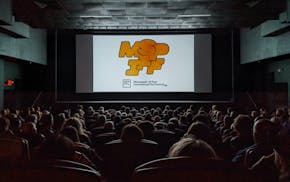For over half a century, violent crime has inflicted grievous fear and suffering on American cities, particularly in Black communities. And like many severe social ills, crime has inspired abundant humbug from competing schools of political quackery.
But at bottom crime may continue to plague and confound us simply because we don't know how to prevent it or reduce it — not, at least, without resorting to injustice.
Crime and its controversies rage across a broad front in Minnesota.
- The Twin Cities are on pace for a third straight year of record bloodshed. In Minneapolis, as of late April, both homicides and shootings are some 75% ahead of their three-year average pace, according to city data.
- A painfully revealing Star Tribune news analysis last weekend ("Juvenile injustice," April 24) exposed a juvenile justice system "failing to effectively intervene in the lives of Minnesota's most troubled kids, often despite anguished pleas from parents." This outcome follows a decade-long experiment in replacing detention with rehabilitation.
- Republicans and Democrats in Minnesota's divided Legislature are clashing over strategies to combat crime. The GOP Senate passed a so-called "tough on crime" bill last week, with considerable bipartisan support. But by week's end a House DFL leader on the issue denounced the Senate approach on these pages as reactionary politics and touted a plan to expand social services to treat crime's root causes.
- A panel discussion about the "crime crisis" produced a crisis of civil discourse in comparatively serene Rochester. Sponsored by the Center of the American Experiment, an often provocative conservative think tank, the canceled and rescheduled event led to a contract dispute, several lawsuits, a front page retraction in the Rochester Post-Bulletin and a fusillade of conflicting opinions on these pages last week.
- The Minnesota Human Rights Department delivered a withering assessment last week alleging habitual civil rights violations by the Minneapolis Police Department. Like many big city police departments, and perhaps as deeply as any, MPD seems trapped in a toxic estrangement from minority communities, as appalling levels of street violence mix explosively with a militarized police culture seemingly unable to rid itself of bigots and brutes.
It's a discouraging scene. And a starkly candid light is shed on the national tragedy we face in a new analysis from a pair of Notre Dame economists — William N. Evans and Maciej H. Kotowski.
Titled "The demand for protection and the persistently high rates of gun violence among young black males," the working paper was published by the National Bureau of Economic Research in April.
Evans and Kotowski present a complex mathematical model for determining how frequently guns will be carried in a given population, which tends to drive how often deadly violence ensues. Their aim is to understand the reasons for the "staggering" and "dispiriting" level of violence among young Black males.
Nationwide, the researchers show, Black males ages 15-24 are murdered 17 times more frequently than the rest of the American population, a heartbreaking disparity that has persisted for decades. Their murder rate is about 10 times the rate for white males in the same age group, and about four times the rate for Black males over 35.
Murder rates for Black males ages 25-34 fell dramatically from the 1960s until about 20 years ago. Since then, unhappily, they've become comparable to rates among younger Black males.
It's particularly troubling that for all Black males under 35, homicide rates have soared in the past few years. They had plunged (albeit leveling off at a still tragically high level) following the end of the crack cocaine epidemic of the 1980s and '90s.
Murder rates among males over 35 — Black or white — have seen no comparable increase in recent years.
"The demand for protection," Evans and Kotowski contend, is the cause of this "bleak" situation. Evidence suggests that excessive numbers of young Black males simply believe "they need to carry [a gun] because everyone else is carrying." Only a fraction are armed because they have a criminal intent.
Often, the scholars note, this perception that "everyone else is carrying" may be exaggerated. But ever since rates of urban violence rose in the 1960s and soared further during the crack epidemic, generations of young Black males have remained caught in a trap of mutual armed suspicion.
"Most non-criminals would be better off if everyone stopped carrying guns," the researchers write, adding in an understatement, "but getting there is difficult."
Evans and Kotowski note that Black males are 2.4 times as likely as white males of similar age to be killed by a police officer, and that this fear also may inspire some to arm themselves. But they also show that young Black male homicide victims are 77 times as likely to have been killed by a civilian as by a cop.
"The need for protection," the researchers write, "is driven in part by the fact that the primary perpetrators of murders of young Black males are other young Black males." Since the early 1990s, they report, known killers of young Black males have been other Black males under age 35 roughly 80% of the time.
Given that they believe the drive to protect oneself and others leads to so much urban violence, Evans and Kotowski are pessimistic about many of the commonly promoted solutions to the crime problem.
They doubt that access to guns could be suppressed enough to disarm a population so strongly motivated to be armed.
And they doubt that enough additional police could be deployed to make an important difference — unless they used aggressive, proactive tactics akin to New York's stop-and-frisk regime of the 1990s, which may have reduced crime but came to be seen as intolerable on civil liberties grounds.
More promising, the scholars say, have been efforts like gang crackdowns and "hot spot" policing that target small numbers of criminals who fuel enormously outsized amounts of violence and resulting fear in many cities. But these strategies also pose constitutional challenges and can inspire community resentments, they warn.
Evans and Kotowski also call attention to "tremendous promise" shown by some programs using cognitive behavioral therapy to teach young men nonviolent ways to respond to volatile situations.
Politicians like to say that public safety, and the right simply to feel safe, is government's most important responsibility. If so, persistent and resurgent crime may be our most important problem, as well as our most intractable one. Realistic expectations may be as necessary as openness to diverse ideas.
D.J. Tice is at doug.tice@startribune.com.

Rash: International Film Festival a reason to return to the theater
From Opinion: Trump tariffs are bad economics and bad politics
From Opinion: The Germans have ways of making you talk — and shut up

